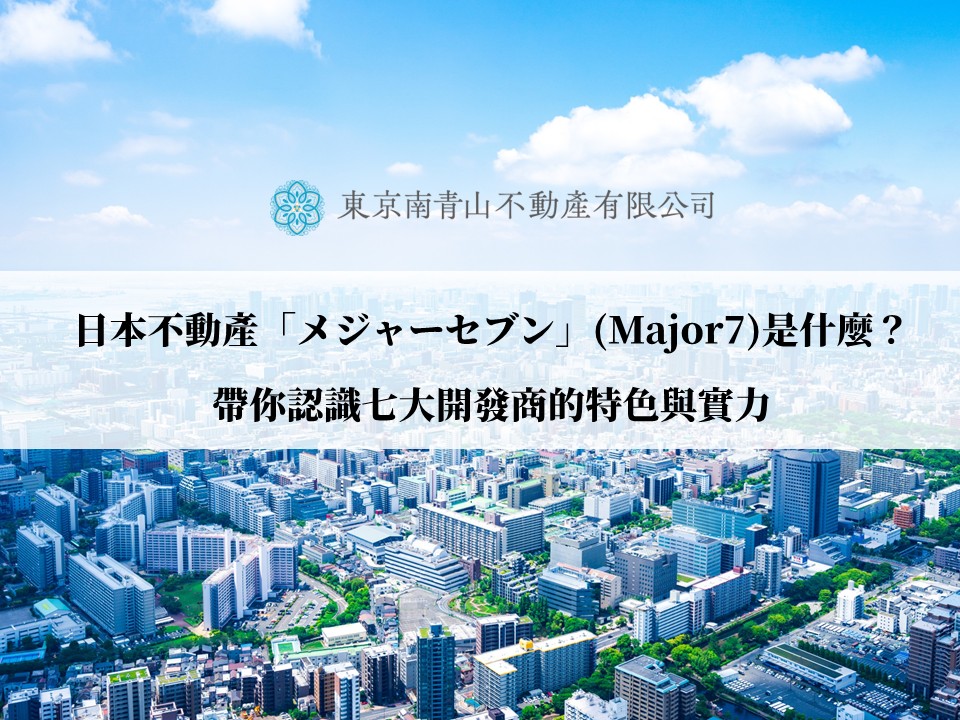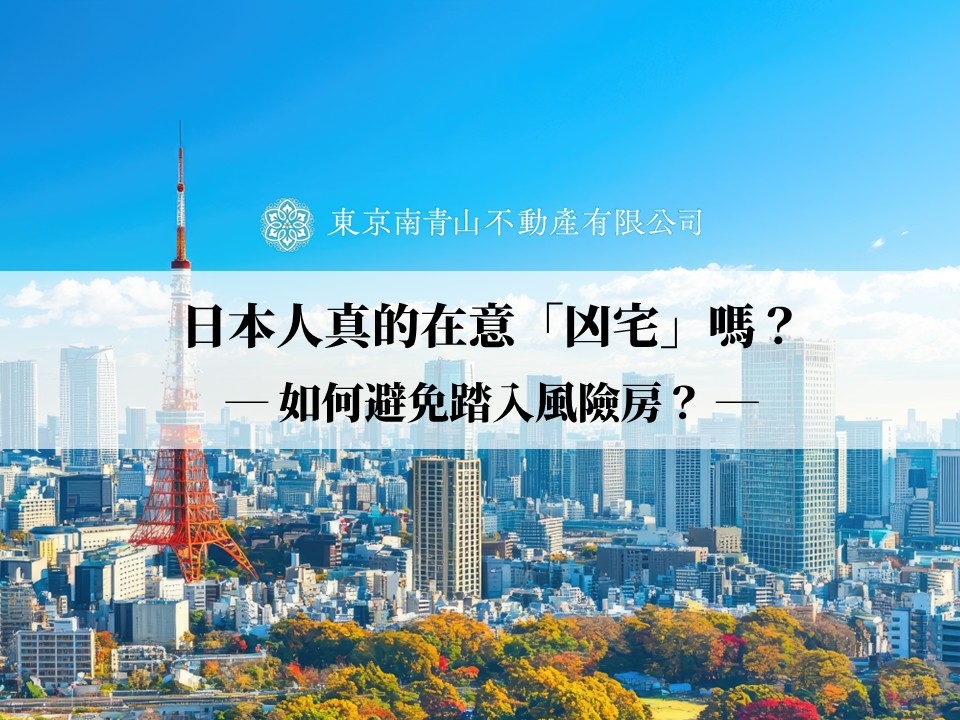In March 2025, the Japanese government released its latest risk assessment for a potential Nankai Trough megaquake, estimating an 80% chance of a major earthquake occurring within the next 30 years. Just two weeks later, the Chinese Embassy in Japan issued a disaster preparedness advisory, bringing earthquake-resistant buildings back into the spotlight.
For Taiwanese investors interested in Japanese real estate, earthquake risks are nothing new. But did you know that the year a property was built and the seismic standards it adheres to not only affect safety, but also influence mortgage interest rates, insurance terms, and the ease of future resale? Earthquake resistance has become a critical factor in the home-buying process that cannot be overlooked.
This article will help you quickly understand the evolution of Japan’s seismic building standards and, from an investment perspective, explain how choosing a property built in the wrong era could significantly reduce your asset’s liquidity.
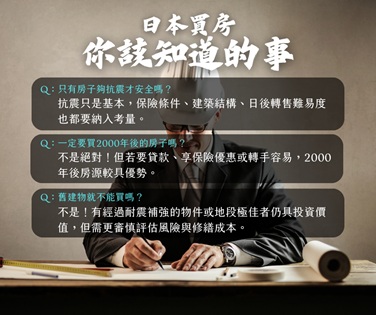
Why Is Earthquake Resistance So Important in Japan, a Country in the Earthquake Zone?
Japan is situated along the Pacific Ring of Fire, a region where approximately 20% of the world’s earthquakes occur. From the 1978 Miyagi Earthquake to the 1995 Great Hanshin Earthquake and the 2011 Great East Japan Earthquake, each major seismic event has prompted regulatory reforms and upgrades in building standards.
Japan Earthquake Frequency Data:
How Are Old and New Earthquake Resistance Standards Defined? Why Are Post-2000 Buildings Considered Safer?
• Buildings approved before May 31, 1981, fall under the old seismic standards, which only required structures to withstand earthquakes with a seismic intensity of five without collapsing.
• Buildings approved after June 1, 1981, are classified under the new seismic standards, designed to endure earthquakes with a seismic intensity of 6 to 7.
• Buildings constructed after two thousand are considered to meet the “new earthquake resistance” criteria, reflecting stricter regulations introduced after the 1995 Great Hanshin Earthquake. These include more rigorous requirements for site surveys, structural joints, and wall configurations, especially in wooden houses.
Data shows that the evolution of building standards has significantly improved the safety of homes during major earthquakes. For this reason, many experts and real estate developers recommend prioritizing properties built after the year 2000 when purchasing a home in Japan.
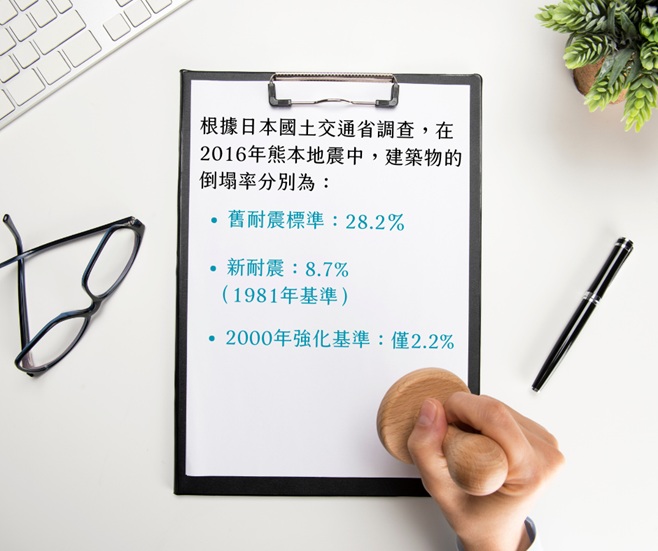
Japanese Building Standards and Regulations:
How to Confirm a Building’s Earthquake Resistance? Check out These Two Documents
For overseas investors, the most straightforward and professional way to determine whether a property meets the “new earthquake resistance” standards is to check the “Building Confirmation Date.”
1. Building Confirmation Certificate
Issued by the relevant authority, this document clearly states the confirmation date and serves as the core basis for determining whether the building complies with the new seismic standards.
2. Building Plan Summary Sheet
Submitted by the developer along with the confirmation application, this document includes the confirmation number, number of floors, building usage, site area, and confirmation date.
If these documents are missing, you can inquire at the local building authority where the property is located.
Further Reading: Should You Choose a Property That Meets the New or Old Standards?
Three Major Earthquake-Resistant Technologies to Upgrade Your Home-Buying Insight
If you are considering buying a home in Japan, understanding these three types of earthquake-resistant technologies is essential:
● Earthquake-Resistant (Taishin):
This is the most common type found on the market today. As mentioned earlier, homes approved after June 1981 follow the new seismic standards. These buildings are reinforced through stronger beams, columns, walls, and foundation structures, allowing them to directly withstand seismic forces without collapsing or suffering severe damage.
Although shaking may still be felt during an earthquake, this design effectively protects the building from fatal structural damage, ensuring safe evacuation and preserving property value.
● Vibration-Controlled (Seishin):
Widely used in mid- to high-rise buildings and modern constructions, vibration control systems incorporate energy-absorbing devices such as dampers within the structure. These components absorb and disperse seismic energy, reducing the overall shaking of the building.
This design is especially suitable for households with high living density and many furnishings, as it significantly minimizes interior damage and psychological stress during earthquakes.
● Base-Isolated (Menshin):
This is the highest level of earthquake-resistant design and also the most expensive. It is commonly found in luxury residences, hospitals, and public facilities.
Base-isolated buildings feature a “seismic isolation layer” at the foundation, using sliding mechanisms or elastic materials to create a flexible buffer between the building and the ground. When an earthquake occurs, the building is shielded from direct ground motion.
Though costly, the superior seismic performance makes it an attractive feature for owner-occupiers and long-term investors.
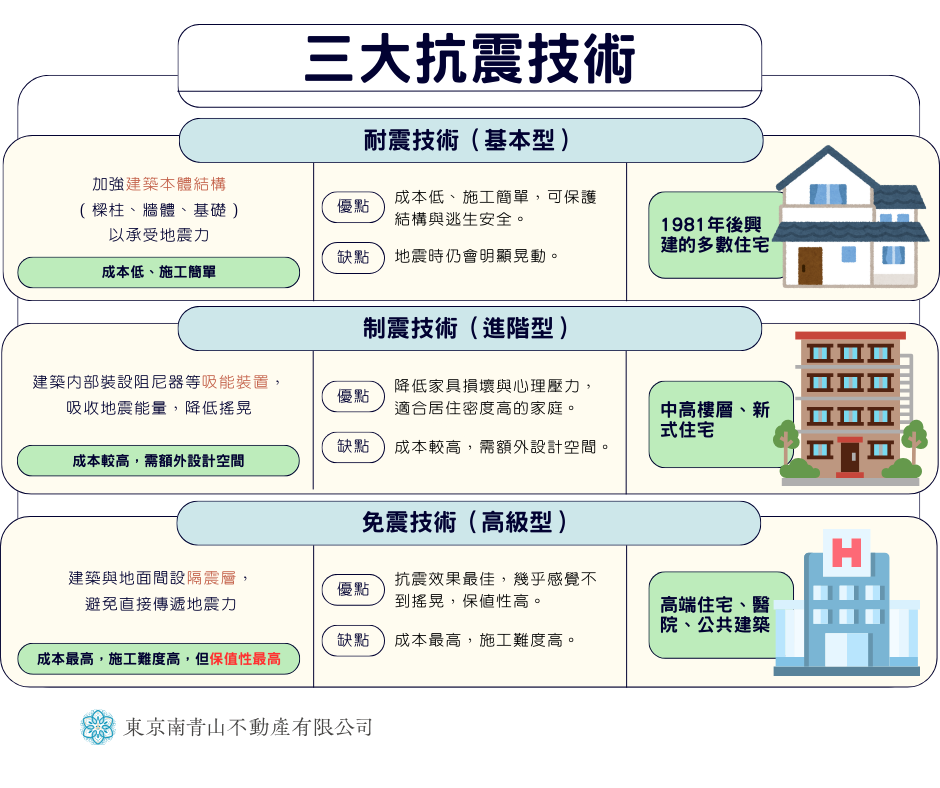
Earthquake Resistance Is not Just About Strength—It Also Affects Resale and Financing
Many buyers assume that earthquake resistance is purely a matter of safety, but in reality, it also has a significant impact on the financial aspects of a property transaction:
● The building’s construction year and seismic standard directly affect mortgage approval and loan-to-value ratios. (Many Japanese banks are now reluctant to offer mortgages for properties built before 1981 under the old seismic standards.)
● Insurance companies often assess structural specifications when determining premiums and coverage terms—such as whether earthquake insurance is available and what the maximum coverage amount is.
● Older buildings, even if cheaper, tend to be harder to resell in the future—especially for overseas investors.
Therefore, choosing a property that meets the right seismic standards not only ensures peace of mind but also protects the value of your investment.
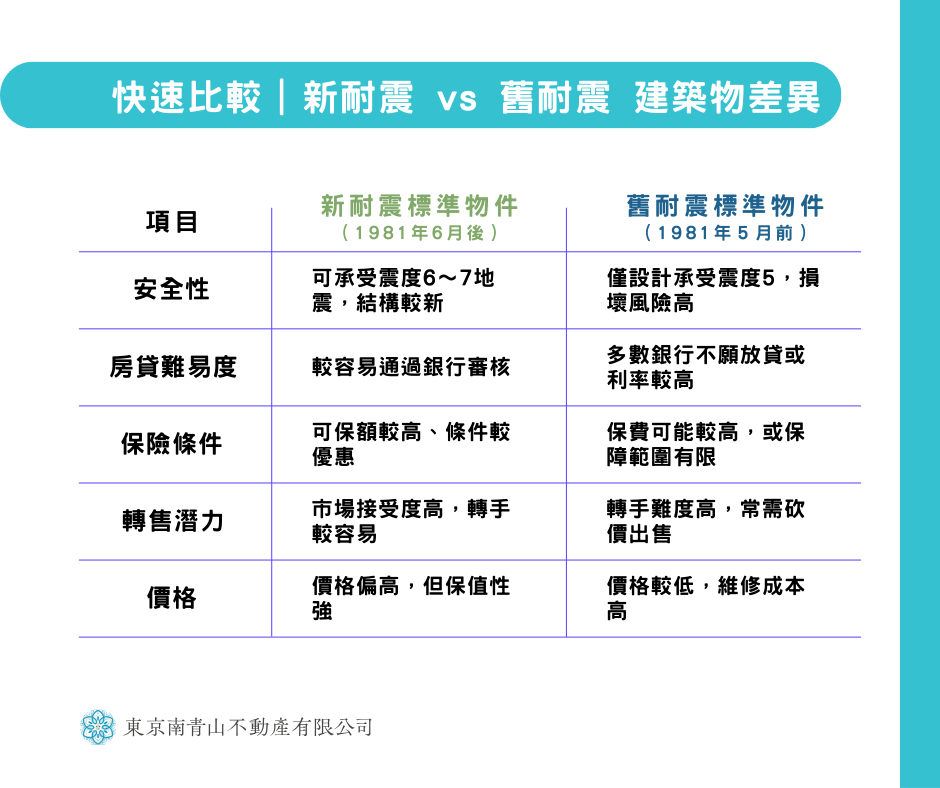
Earthquake Resistance Is More Than Just Protection—It is Your Negotiation Power
Whether you are buying for investment or personal use, understanding seismic standards is a way of taking responsibility for your assets. In regions prone to natural disasters, the building’s age and structural specifications affect more than just safety—they can also influence mortgage interest rates, insurance terms, and the ease of future resale.
For buyers interested in investing in Japanese real estate, earthquake resistance is a key risk management indicator that directly impacts a property's liquidity and long-term value retention.
If you are currently searching for a property — feel free to join our official LINE account:



